
“Ground cover” technically refers to the base layer of the four forest levels: ground cover, shrub, understory, and canopy. But in gardening, ground covers are generally considered low-growing or trailing plants that are used to cover large areas. Since covering ground solidly and quickly is a primary goal of a ground cover, plants with these traits are those best adapted to that purpose. This is a boon in an appropriate application. Put those same plants in perennial borders and they become a bane.
Some common ground covers can spread so effectively that they become aggressive and grow out of control. As I discuss alternatives to those thuggish traditional ground covers listed here as problem plants, keep in mind that each may still have merit in the right setting. Properly sited, some of these problem plants may have worth. Do not, however, use any that are listed as invasive in your region. There are no justifications for using those. In my gardening experience, I have focused on one mantra that should dictate every planting choice we make: “Right plant, right place.” Remember that when deciding which ground cover is perfect for your garden.
Problem plant: Lily of the valley
Name: Convallaria majalis*
Zones: 3–8
This plant prefers dry, shaded conditions where it’s not as likely to mass tightly, and there are gardeners who love its richly fragrant flowers. Recent variegated introductions have renewed its appeal. However, sunlight and rich garden soil greatly increase this plant’s density and rate of spread. It can go quickly from a charming spreader to an aggressive brute.
Alternative plant: Golden ragwort
Name: Packera aurea
Zones: 3–8
Size: ½ foot to 2½ feet tall and wide
This eastern North American native will completely cover the ground it’s planted in and spread quickly through both rhizome and seed. However, I find it much easier to thin and control than lily of the valley. I have it planted under several mature American lindens (Tilia americana, Zones 2–8), which can rob surrounding soil of moisture. Golden ragwort thrives in this setting, where most plants would give up. The cheery yellow, daisy-like, long-lasting flowers are most welcome in early spring; they provide some of the first bright colors that announce the end of the winter doldrums.
Try these too
 |
 |
| Wild ginger (Asarum canadense, Zones 4–6). Photo: Michelle Gervais | Purple poppy mallow (Callirhoe involucrata, Zones 4–8). Photo: Karen Beaty |
Problem plant: Bishop’s weed
Name: Aegopodium podagraria*
Zones: 4–9
The best tip I’ve heard for growing this plant is “Contain in concrete.” If bishop’s weed has been growing on your property, you understand why this is advised. I don’t find the green-foliaged species commonly available anymore, but the attractive variegated foliage of the cultivar ‘Variegata’ (pictured) made this plant very popular as a ground cover. In general, variegation weakens a plant’s aggressive behavior. But in this case, the cultivar is as noxious as its parent.
Alternative plant: ‘Halcyon’ hosta
Name: Hosta ‘Halcyon’
Zones: 3–8
Size: 1½ to 2 feet tall and 2½ to 3 feet wide
Since bishop’s weed is grown for its foliage and not its flowers, I am recommending the queen of foliage as a substitute. Hostas aren’t generally thought of as ground covers, but you can’t beat their durability in partial to full shade. I have found no better weed deterrent for large spaces than packing hostas together. They provide such dense shade that weed seed simply cannot germinate. If you are using hostas as a ground cover, choosing a cheap and readily available variety is ideal. ‘Halcyon’ is an older, tried-and-true hybrid cultivar that fits the bill. The glaucous-blue, thick foliage resembles seersucker fabric and is a soft, near-neutral shade of green that works with many other colors.
Try these too
 |
 |
| ‘Jack Frost’ brunnera (Brunnera macrophylla ‘Jack Frost’, Zones 3–8) | Lungwort (Pulmonaria spp. and cvs., Zones 3–8) |
Problem plant: Ajuga
Name: Ajuga reptans
Zones: 3–10
Don’t get me wrong—ajuga has its uses, and I do grow several cultivars myself. But one of the primary issues with it is that it will spread into lawns and become difficult to eradicate. As a border plant, it spreads very quickly, requiring annual division and control. In areas with winter snow, it is highly susceptible to gray snow mold; I have seen enormous patches killed off during some spring seasons.
Alternative plant: Meehan’s mint
Name: Meehania cordata
Zones: 4–8
Size: 3 to 6 inches tall and 3 to 18 inches wide
Meehan’s mint is very similar in its growth habit to ajuga, with rich glossy green foliage that persists through the heat of summer as long as the soil doesn’t dry out. It blooms with a profusion of hooded lavender-blue flowers from mid to late spring. Native to eastern North America, it tolerates deep shade better than most plants I know. I grow it as a sidewalk and path edger in both sun and shade with equal success.
Try these too
 |
 |
| Mazus (Mazus reptans, Zones 5–8) | Serbian bellflower (Campanula poscharskyana, Zones 3–8). Photo: Kerry Ann Moore |
Tip: Mix it up
Ground covers are nearly always planted in massed groupings of the same plants. I encourage you to view these plantings with some eye to design, as you would in your perennial garden beds. Monocultures of any plant present several issues, including easy spread of disease and insect damage; a problem that affects one plant and kills it could wipe out the entire stand. Adding other plants increases visual interest and biodiversity. Mix other perennials with those ground covers that are not overly dense and that play well with others. If a ground cover is too robust and aggressive to plant with other perennials, use sturdy shrubs instead.
Problem plant: Blue sedge
Name: Carex flacca
Zones: 4–9
I have used this lovely, soft-textured sedge before. It has charming glaucous-blue foliage. And while it tolerates dry shade well, there is recent evidence that this European native is becoming invasive in North America. It has been found outside cultivation in the woods of the Mid-Atlantic, Northeast, and three Canadian provinces. This information is so new that blue sedge cultivars are still marketed and sold without warning.
Alternative plant: Pennsylvania sedge
Name: Carex pensylvanica
Zones: 3–8
Size: 6 to 12 inches tall and wide
Even as a teenager, I appreciated the soft, flowing look of what I thought was an elegant, gracefully arching grass growing throughout woodlands in Upstate New York. Pennsylvania sedge is both shade and drought tolerant, and I use it in my garden planted en masse as a soft-textured carpet around other durable plants; it does well in woodland planting schemes. This eastern North American native is a great textural foil for plants with bold foliage. Bristle-leaf sedge provides a similar service in sunnier locations.
Try these too
 |
 |
| Bristle-leaf sedge (Carex eburnea, Zones 2–8) | ‘All Gold’ Japanese forest grass (Hakonechloa macra ‘All Gold’, Zones 5–9) |
Problem plant: Japanese pachysandra
Name: Pachysandra terminalis
Zones: 5–9
This plant has been the queen of ground covers for those with Japanese-inspired gardens as well as deeply shady areas. However, any amount of sun turns the glossy green foliage a sickly yellow. It is so effective at spreading, growing with dense matted roots, that there is no chance to integrate other plants. I once had volunteers remove an overgrown planting of pachysandra that they could only accomplish by cutting out 8- to 10-inch-long heavy and impenetrable squares of roots.
Alternative plant: Allegheny spurge
Name: Pachysandra procumbens
Zones: 5–9
Size: 6 to 12 inches tall and 1 to 2 feet wide
Unlike the aforementioned Japanese species, the foliage of this native pachysandra has a lightly glaucous-blue matte finish. Once established, it is extremely drought and shade tolerant. There are also some lovely variegated cultivars. Allegheny spurge is native to the southeastern United States and at its best in acidic soils, but I have found it more forgiving of alkaline conditions than many acid-loving plants. It’s not commonly sold at garden centers in many areas of the country, so mail-order sources might be the only option for some gardeners.
Try these too
 |
 |
| Quamash (Camassia leichtlinii, Zones 5–9) | Bergenia (Bergenia cordifolia, Zones 3–8) |
Problem plant: Creeping buttercup
Name: Ranunculus repens*
Zones: 4–9
This aggressive spreader has made its way onto some invasive plant lists because it continues to spread into natural areas. It is particularly problematic in moist environments. The cultivar ‘Buttered Popcorn’ (pictured) is still offered for sale in many markets despite these issues. Keep in mind its rampant nature when you find yourself attracted to the lovely yellow buttercup flowers and chartreuse, deeply cut foliage. Forewarned is forearmed at the garden center!
Alternative plant: Foam flower
Name: Tiarella cordifolia
Zones: 4–9
Size: 9 to 12 inches tall and 1 to 2 feet wide
This eastern North American native prefers soil that is organically rich and moisture retentive yet well drained. It’s a lovely shade garden plant, but in areas such as the Midwest where most deciduous shade trees cause water-deprived soils, amending with organic matter may be necessary. Foam flower is one of the more expensive plants featured here and may not be an economical option for large areas where fast coverage is essential. There are both clumping and running forms, and for a ground cover you should seek the latter. There are many cultivars available with substantial variations in foliage shape and color. The iconic bottlebrush flowers that bloom in early spring joyfully proclaim the end of winter.
Try these too
 |
 |
| Epimedium (Epimedium spp. and cvs., Zones 4–9) | ‘Karmina’ Cambridge geranium (Geranium cantabrigiense ‘Karmina’, Zones 5–8) |
Problem plant: Periwinkle
Name: Vinca minor*
Zones: 4–8
I confess that I adore the blue-to-purple flowers on periwinkle and its cultivars with variegated foliage. It became popular for its deep shade tolerance. However, it joins a growing number of plants on invasive do-not-sell-or-grow lists, as it spreads into our woodlands and displaces wildflowers. It is slow to establish, but once it does, it creates dense mats that prohibit other plants from growing through it.
Alternative plant: Goldenstar
Name: Chrysogonum virginianum
Zones: 5–9
Size: 6 to 12 inches tall and 9 to 18 inches wide
This underutilized, shade-tolerant native requires more evenly moist soils than periwinkle, but if that can be provided, it forms controllable, low-growing mats of bright green foliage. Native to the eastern United States, it flowers profusely in spring with yellow flowers just as we need bright color the most. It blooms sparsely through the summer, and in some years it can substantially rebloom in fall. This is another plant that is not commonly sold in garden centers but is worth the mail-order search.
Try these too
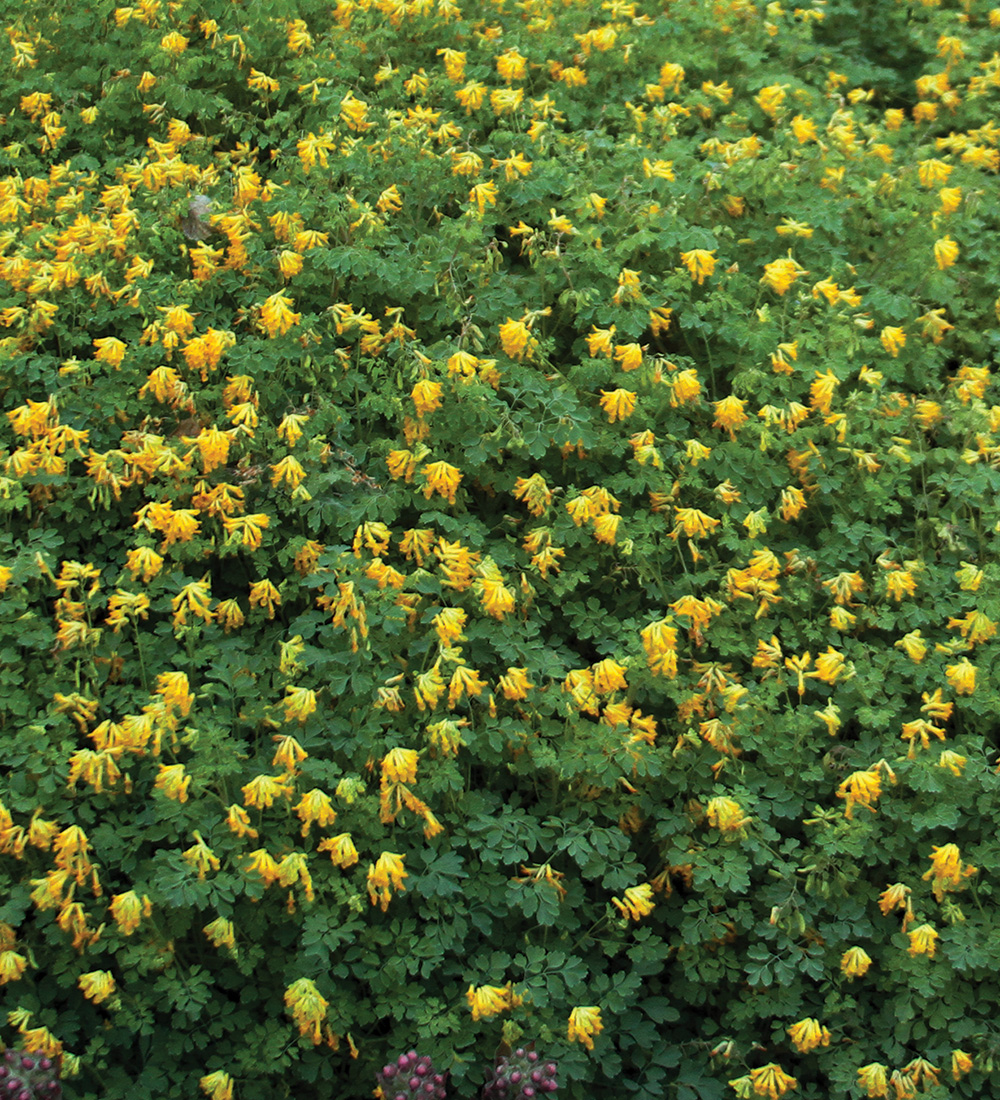 |
 |
| Yellow corydalis (Corydalis lutea, Zones 5–7) | Spring cinquefoil (Potentilla neumanniana, Zones 4–8) |
Problem plant: Spotted deadnettle
Name: Lamium maculatum
Zones: 3–8
What a shame that I must list this as a problem plant. There are many cultivars of spotted deadnettle available, each with a wide variety of foliage colors, including silver patterned and variegated. And they all have lovely flowers. But I often hear from those who were lulled by spotted deadnettle’s beauty in the garden center and are now cursing its aggressive, thuggish behavior. It also seems to melt away in strong summer heat, leaving open holes in the landscape where it dies.
Alternative plant: ‘Herman’s Pride’ yellow archangel
Name: Lamium galeobdolon ‘Herman’s Pride’
Zones: 3–8
Size: 10 to 12 inches tall and 12 to 14 inches wide
In this case, the cultivar matters. Yellow archangel as a species is native to Europe and western Asia, and in North America it spreads as rampantly as spotted deadnettle, with even longer rhizomes. However, ‘Herman’s Pride’ is different and grows in controlled clumps. Plants with ascending roots aren’t often used as ground covers, but in this case I think massing ‘Herman’s Pride’ works well. The foliage is dark green with lightly silvered overlays, and the bright yellow flowers emerge in late spring.
Try these too
 |
 |
| Bloody geranium (Geranium sanguineum, Zones 3–9) | Japanese painted fern (Athyrium niponicum var. pictum, Zones 3–8) |
Problem plant: Chameleon plant
Name: Houttuynia cordata
Zones: 4–10
I have heard of many gardeners across the country lamenting having planted chameleon plant. Not only does it become uncontrollable, but broken pieces of rhizomes that come from trying to remove it easily regenerate. It’s also resistant to most herbicides. As I heard from one gardener, “Run as fast as you can from this plant!” It is especially problematic to gardeners in the southern United States.
Alternative plant: Plumbago
Name: Ceratostigma plumbaginoides
Zones: 5–9
Size: 6 to 12 inches tall and 12 to 18 inches wide
Why is this plant not used more? Relatively ground hugging, plumbago has shiny, medium green leaves that make for a fresh-looking ground cover through the growing season, turning lovely bronze-red from late summer into autumn. Plumbago is native to western China, with blue flowers that resemble woodland phlox (Phlox divaricata, Zones 3–8) and bloom from midsummer to frost. In addition, it is tolerant of a wide range of soil conditions except overly moist and can be used in sun and shade.
Try these too
 |
 |
| ‘Albus’ creeping thyme (Thymus praecox subsp. arcticus ‘Albus’, Zones 5–8) | ‘Waterperry Blue’ speedwell (Veronica ‘Waterperry Blue’, Zones 4–8) |
*Invasive alerts:
Lily-of-the-valley (Convallaria majalis)
This plant is considered invasive in WI.
Bishop’s weed (Aegopodium podagraria)
This plant is considered invasive in AK, CT, MA, ME, PA, RI, VT, WI, and WV.
Creeping buttercup (Ranunculus repens)
This plant is considered invasive in AK, CA, and MA.
Vinca (Vinca minor)
This plant is considered invasive in AL, DE, GA, IN, KY, OR, PA, SC, TN, and VA.
Please visit invasiveplantatlas.org for more information.
Ed Lyon is the director of Reiman Gardens at Iowa State University in Ames, Iowa, and the author of Growing the Midwest Garden.
Photos, except where noted: courtesy of Ed Lyon
Sources
- Prairie Moon Nursery, Winona, MN; 866-417-8156; prairiemoon.com
- Garden Crossings, Zeeland, MI; 616-875-6355; gardencrossings.com
- Far Reaches Farm, Port Townsend, WA; 360-385-5114; farreachesfarm.com
- Digging Dog Nursery, Albion, CA; 707-937-1130; diggingdog.com
- Great Garden Plants, Great Haven, MI; 877-447-4769; greatgardenplants.com



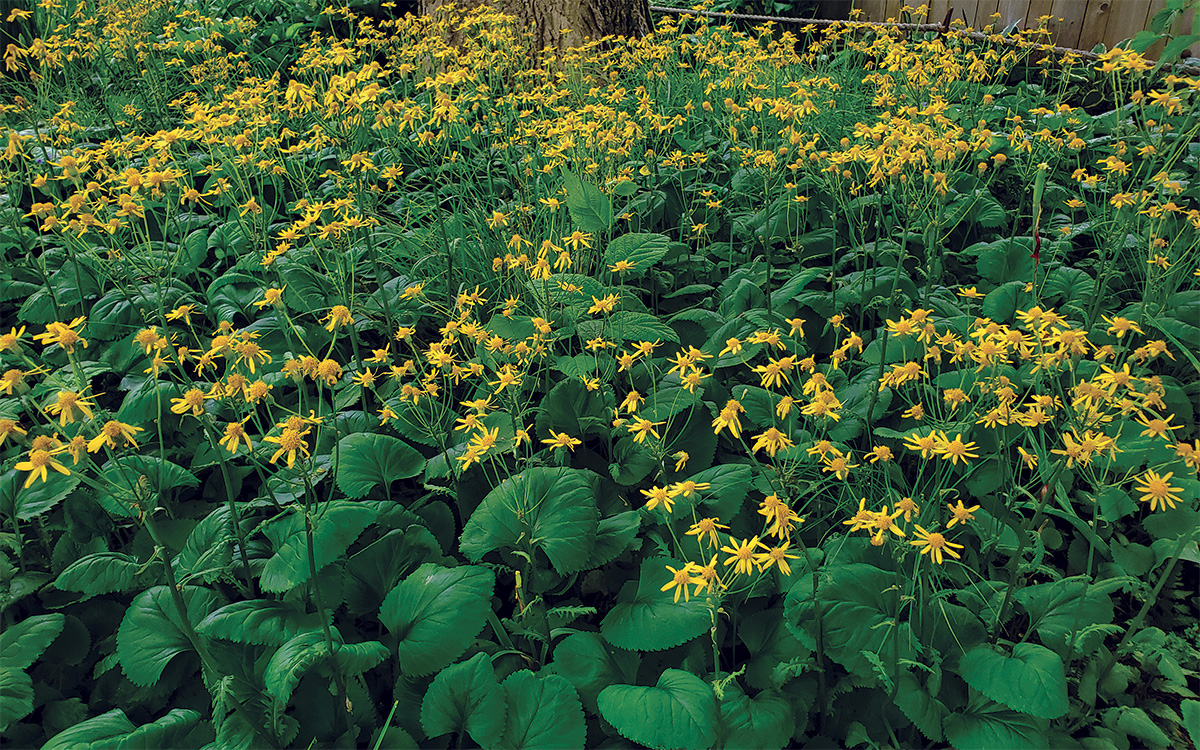
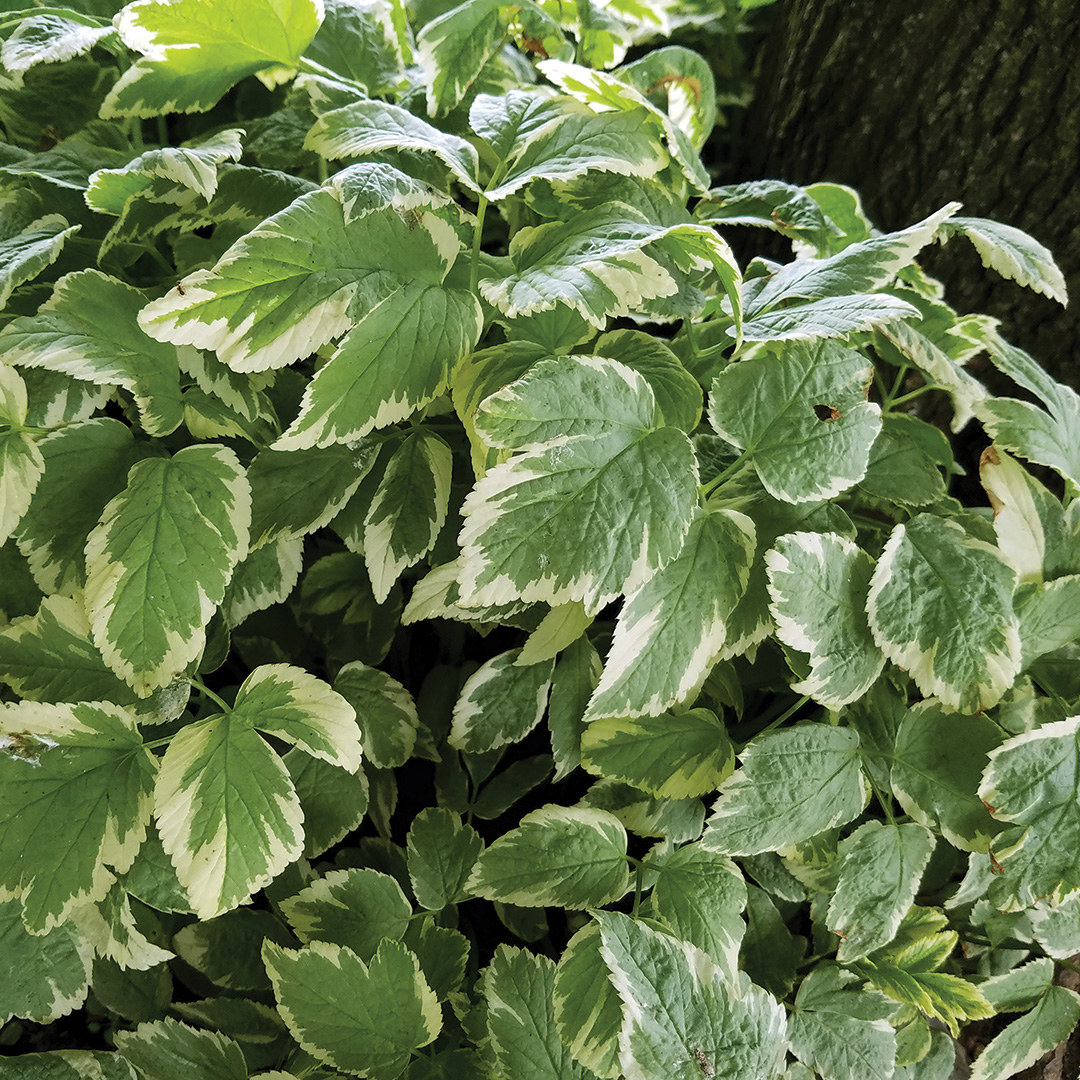
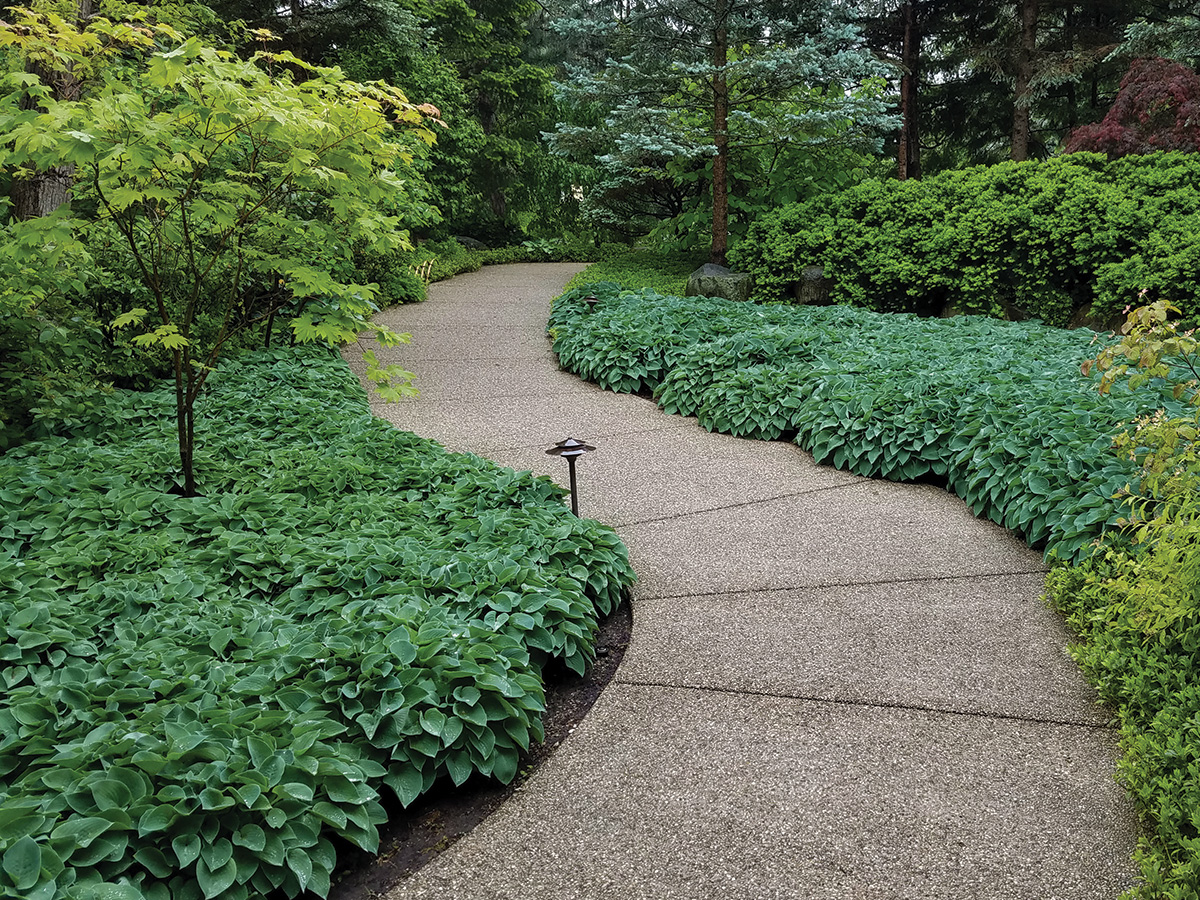

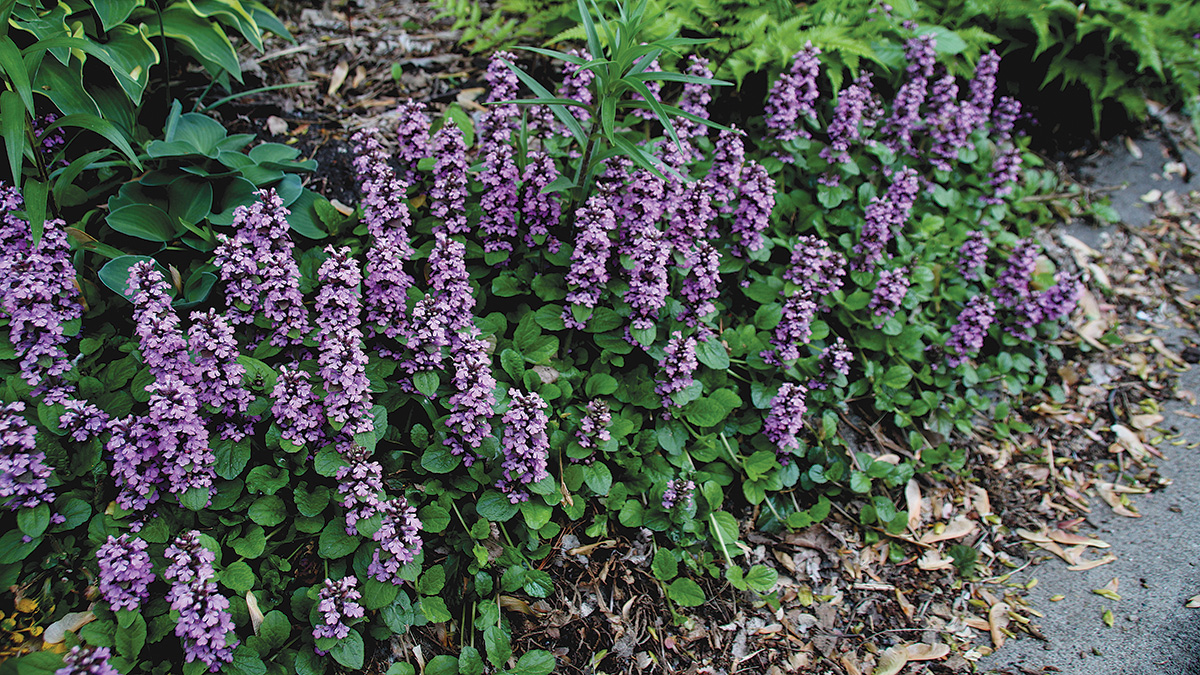










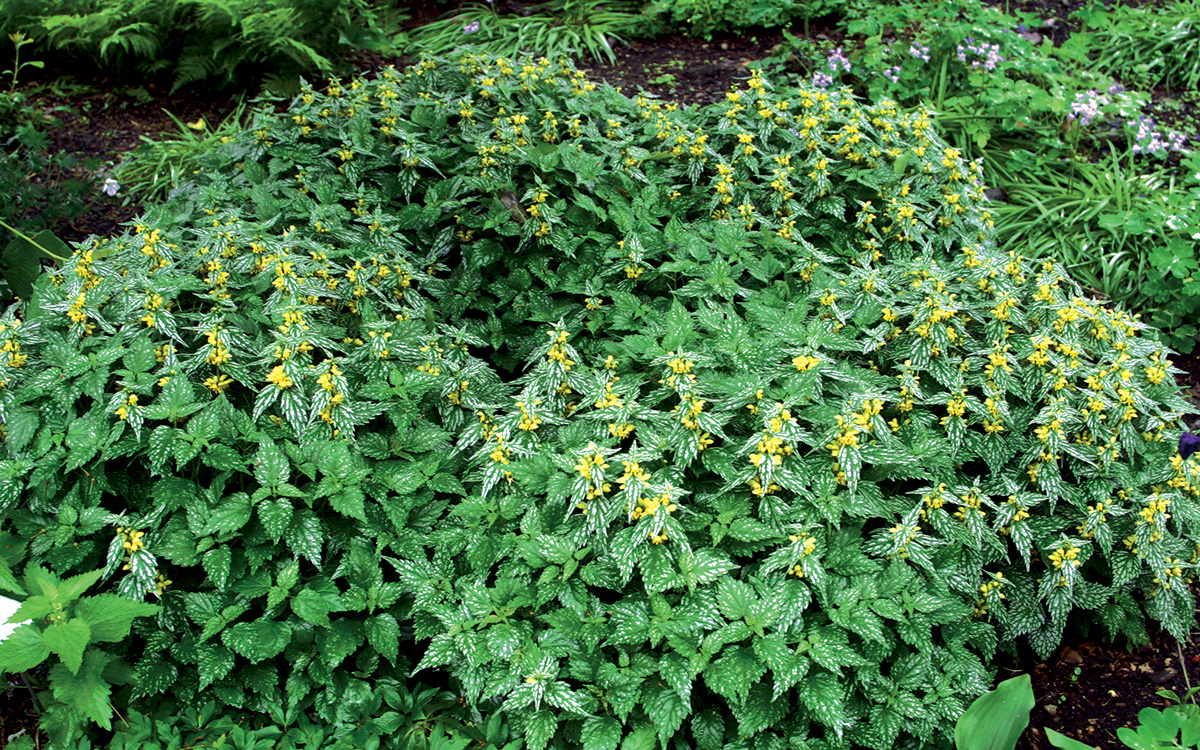



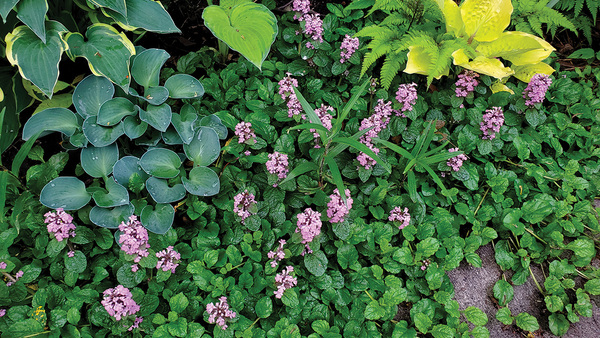














Comments
These are mostly great suggestions. But it is so obvious that many non-natives have a high chance of becoming invasive, and they don't support our ecosystem. So why not recommend all natives?
Especially with Carex, and grasses- there are so many wonderful native types! Why is Japanese forest grass recommended? My neighbor has those, but even she admits they don't look so great compared to the various sedges in our garden: Appalachian, Long-beaked, Pennsylvania, Seersucker, and others.
Instead of the non-natives, and in addition to the natives you did recommend, what about:
Wild (native) Strawberry- this one is fantastic! Supports many lepidoptera and therefore birds.
Moss phlox
Goldenseal
Anemone Canadensis
Native violets
Eastern teaberry
Canada Mayflower- looks a lot like lily-of-the-valley
I hate lily-of-the-valley, it is impossible to get rid of, though the Ragwort I planted there is doing a good job trying to help out.
Log in or create an account to post a comment.
Sign up Log in